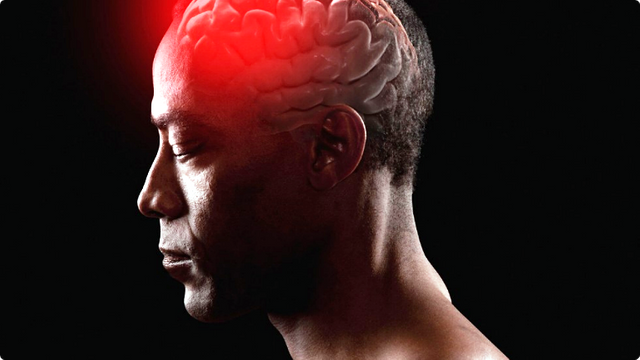WHAT IS STROKE
Hi steamers,
In my brief #introduceyourself, I talked about my dad’s death which I considered to be untimely but I didn’t mention the cause of his death. Therefore, in this article, I will write basically on the illness and possible ways to avoid it.
Please, if you will not read for yourself, read so you can end the suffering of stroke patients around and ultimately save their lives.
WHAT IS STROKE
Stroke, also called Cerebrovascular Accident (CVA) is unexpected damage of cerebral circulation in one or more of the blood vessels supplying the brain. In other words, it is a disease that affects the arteries leading to, and within the brain. A stroke often occurs when a blood vessel that carries oxygen and nutrients to the brain is either blocked by a clot or rupture. Hence, that part of the brain will no longer get the blood (and oxygen) it needs, so the brain cells die.
STROKE MORTALITY
Stroke mortality has been noted or seen to be higher worldwide. For example, “someone in the US has a stroke every 40 seconds on Average”. In 2016, Stroke accounted for about 1 of every 19 deaths in the US. Also, in most developing countries with less access to medical facilities, the number of people dying of the disease is higher than the developed ones. For instance, in Nigeria, the disease accounts for as much as 87%. This is quite true because my dad died of the same illness at the age of 64. Sometimes I wish there were more sensitization of the masses of this deadly disease that has claimed so many lives and still the major cause of death.
CAUSES AND INCIDENCE
There are similar causes of stroke and heart diseases, but in a stroke the result is more severe. Below are some of the causes of stroke:
• Smoking
• Unhealthy diet
• Diabetes
• Obesity
• Use of birth control pills
SMOKING
We now live in a contemporary society where everyone wants to feel among without ample knowledge of the consequences of such habit or freedom to consume whatever one’s wishes to consume. Smoking has a devastating effect on the health of the smoker so also to anyone that inhales its toxic fumes. From my research, cigarettes contain high levels of cadmium that causes the blood to clot the activity of cells which result in blocking of blood flow and destroying the blood vessels in the brain.
UNHEALTHY DIET
With reference to my previous article on “KETO DIETING” there, I explained that for one to build muscles, the body burns fat instead of carbs which is high in protein and I recommended doing it right or not at all because, a diet high in saturated and trans fats causes bad cholesterol to build up in the blood vessels of the brain, blocking oxygen needed for the cells thus escalating the risk of stroke.
DIABETES
People with diabetes tend to have a stroke at an early age than other people. Diabetes with unhealthy diets leads to high blood pressure which causes the blood vessels in the brain to harden and thin, increasing the risk of stroke. Thus, this is the leading cause of death among people with diabetes.
OBESITY
From recent studies, a body mass index of 30 or higher shows that even after adjusting to other stroke risk factors such as diabetes, high cholesterol, smoking, cardiac disease, high blood pressure, alcohol consumption and lack of physical activity; obesity is still associated with the greatest risk of stroke in men and women.
USE OF BIRTH CONTROL PILLS
From research, birth control pills contain estrogen and of two other hormones, lynestrenol or norethisterone that increases the risk of blood clotting, which leads to ischemic stroke especially in women who smoke and who are older than 35. There are many other causes of stroke which from obstruction of the blood vessel, typically outside the brain, or within the brain itself. Other factors such as atherosclerosis, hypertension (my dad was hypertensive which later resulted in stroke), kidney disease, heart enlargement, high serum cholesterol and family history of strokes. Also, cocaine is another major cause of stroke, especially among youngsters. Stroke is uncommon in children. However, stroke in children is often secondary to congenital heart disease, abnormalities of intracranial vessels, genetic disorders and blood disorders such as thrombophilia.
TYPES OF STROKE
Strokes can be classified into two major categories: ischemic and hemorrhagic, 80% of strokes are due to ischemia, the rest are due to haemorrhage.
• Ischemic stroke is basically caused by a blockage clot within the artery leading to the brain.
• Hemorrhagic stroke is caused by bursting of the vessel in the brain resulting in leakage of blood into the brain.
Ischemic Stroke
It is the most common type of stroke accounting for almost 80% (from statistics gathered) of all strokes.
There are two types of Ischemic stroke:
Thrombosis
This is the most common cause of stroke in middle age and elderly people as they tend to have a higher incidence of arterial plaque, diabetes or hypertension. It can happen at any age, especially in those with a history of rheumatic heart disease, endocarditis, cardiac arrhythmias, or after open heart surgery.
Embolism
This is the second most prevailing cause of stroke. This occurs when the blood vessel is blocked by a clot, a tumour, fat, bacteria or air. Embolisms usually develop within 10 to 20 seconds and without warning and when they get to the brain, it will cut off circulation by lodging in a narrow part of an artery causing swelling and tissue death.
Haemorrhage
This is the third most common type of stroke, which is more seen in women than men like embolism can occur suddenly at any age. It results from chronic hypertension or from aneurysms that cause a sudden rupture of a cerebral artery.
PREVENTION
There are three treatment stages for a stroke patient: prevention, therapy immediately after the stroke and post stroke rehabilitation. Therapies administered to prevent first or recurrent stroke are based on treating an individuals with underlying risks causes or factors for stroke such as hypertension, atrial fibrillation, and diabetes. Lowering blood pressure has been conclusively shown to prevent both ischemic and hemorrhagic stroke. Also, aspirin prevents against first stroke in patients who have suffered a myocardial infection. Nutrition, especially the Mediterranean style diet, has the potential of more than having stroke risk.
Summary
Stroke is the number one cause of disability among adults. Stroke is the third leading cause of death in the United States. For most developing countries, the effects of stroke are significantly high. According to the National Stroke Association, “ 80% of strokes are preventable.
Please steamers, join me in helping our community to take proactive steps in reducing the risk of stroke.
I hope this information will help. In my next article I will write exhaustively on the various treatments for stroke.

